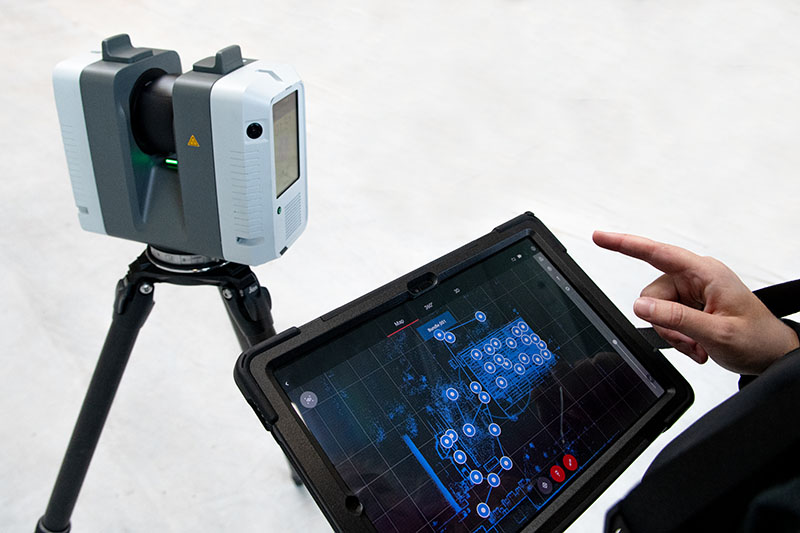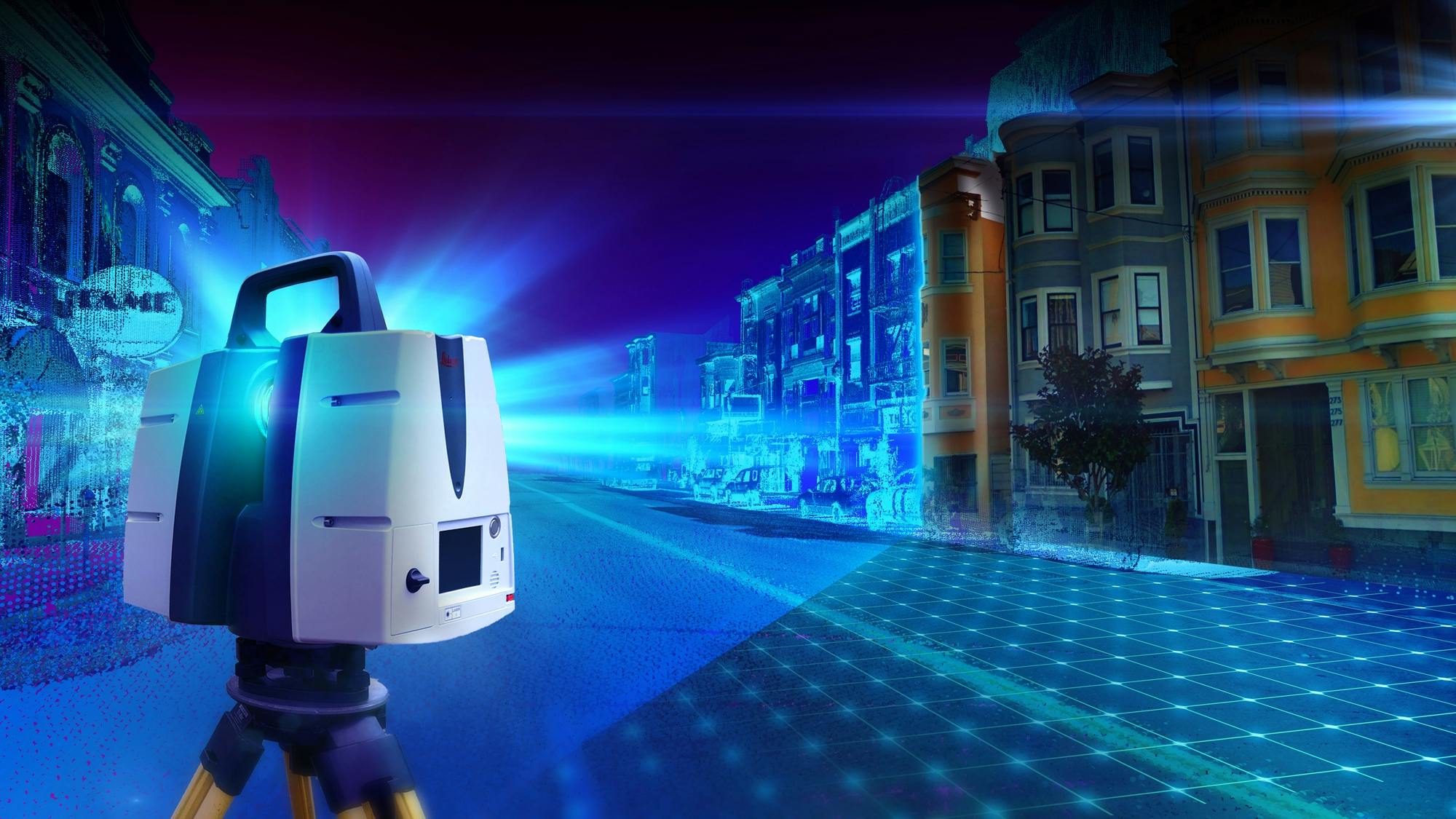A Builder’s Guide to Understanding 3D Scanning Uses
Wiki Article
Discovering the Applications of 3D Laser Scanning in Archaeology and Cultural Heritage Conservation
The integration of 3D laser scanning technology in archaeology and cultural heritage preservation marks a substantial advancement in how historical sites and artifacts are documented and examined. This non-invasive approach provides precise spatial data, disclosing intricate information that were previously hard to capture. As the applications of this technology remain to develop, different implications for documents, education and learning, and conservation emerge, inviting more exploration into its transformative impact on the area.Recognizing 3D Laser Scanning Innovation
3D laser scanning technology has actually reinvented the field of archaeology by providing precise and thorough spatial information. This sophisticated modern technology employs laser light beams to catch millions of information points from an object or website, creating a very precise three-dimensional representation (3D Scanning). The resulting point clouds can disclose complex details of historical sites, frameworks, and artifacts that may be invisible to the nude eyeUtilizing this modern technology, archaeologists can record the exact measurements, shapes, and settings of objects with extraordinary accuracy. This technique lessens the threat of human error and gets rid of the need for considerable manual measurements. The information collected can be evaluated and shared conveniently, helping with collaboration amongst scientists. By integrating 3D laser scanning with GIS and other electronic devices, excavators improve their capacity to visualize and translate historic contexts, bring about deeper insights into old societies and environments.
Enhancing Archaeological Paperwork
3D laser scanning substantially boosts archaeological paperwork with its capacity to develop exact website maps. This technology assists in comprehensive artifact evaluation, giving understandings that traditional approaches might neglect. On top of that, it ensures the conservation of contextual information, which is essential for comprehending the connections within historical sites.Precise Website Mapping
While standard mapping techniques usually battle with recording the detailed information of historical sites, progressed laser scanning modern technology supplies a revolutionary strategy to exact site mapping. This technique enables excavators to develop very detailed and exact three-dimensional representations of sites, showcasing topographical variations and structural attributes with impressive integrity. The ability to capture millions of data factors in a matter of minutes enables detailed paperwork, which can be easily upgraded and shared among researchers. Additionally, laser scanning helps with the measurement of complicated geometries that would certainly be difficult to examine using standard tools. Therefore, this innovation enhances the accuracy of site maps, adding significantly to the preservation and understanding of social heritage sources.Comprehensive Artefact Evaluation
Laser scanning modern technology considerably boosts the evaluation of historical artifacts, supplying scientists with extraordinary information and precision. This technique catches complex surface area appearances, dimensions, and includes that standard documentation strategies might forget. By producing high-resolution 3D models, scholars can closely take a look at artefacts without the threat of damages integral in physical handling. This precision enables better comparative research studies, making it possible for experts to identify manufacturing techniques, stylistic variants, and potential cultural importance. The ability to control and visualize information in 3 measurements helps with a much deeper understanding of artifact performance and use. On the whole, laser scanning promotes a much more detailed approach to historical documentation, making certain that essential details regarding artifacts is maintained for future research study and education and learning.Conservation of Contextual Information
Maintaining contextual data is important for enhancing historical documentation, as it guarantees that searchings for are understood within their initial environmental and cultural structures. 3D laser scanning technology considerably contributes to this preservation effort by catching comprehensive spatial relationships among artefacts, frameworks, and their atmospheres. By generating exact 3D models, excavators can record the specific areas and alignments of things in situ, facilitating a detailed understanding of their context. This innovation makes it possible for researchers to revisit and evaluate websites long after excavation, maintaining the stability of contextual information. On top of that, digital documents developed via scanning can be shared worldwide, promoting collaborative study and public interaction. Ultimately, preserving contextual information with 3D laser scanning improves archaeological stories and promotes an extra extensive recognition of social heritage.Preservation of Cultural Heritage Sites
As improvements in modern technology continue to evolve, the preservation of cultural heritage sites has come to be increasingly reliant on cutting-edge techniques such as 3D laser scanning. This technology permits the thorough documentation of landscapes, artefacts, and structures, catching their specific dimensions and spatial connections in a non-invasive fashion. By producing high-resolution 3D models, researchers can evaluate and keep an eye on deterioration patterns, making it possible for aggressive conservation techniques.Additionally, 3D laser scanning facilitates link the sharing of in-depth site information with the global community, advertising cooperation amongst guardians, historians, and archaeologists. These models work as important resources for education and public involvement, increasing awareness of cultural heritage problems. The electronic records developed can safeguard versus loss due to ecological factors, criminal damage, or neglect. In general, 3D laser scanning represents a transformative technique to the preservation of cultural heritage, making sure that these websites can be studied and appreciated by future generations.

Restoration and Repair Initiatives
The detailed paperwork achieved with 3D laser scanning plays a substantial role in reconstruction and restoration efforts within archaeology. This technology supplies accurate dimensions and high-resolution imagery, enabling for exact digital models of artifacts and frameworks. These models function as important referrals during reconstruction procedures, making it possible for archaeologists to imagine the original layout and make educated decisions about products and techniques needed for repair.3D laser scanning promotes the restoration of harmed or lost elements by developing thorough reproductions. This process aids in making certain that repairs maintain historical integrity while additionally permitting for ingenious approaches to restore sites. The capacity to assess wear patterns and structural weak points via checked information enhances understanding of a website's historical context and its use in time. 3D laser scanning not only preserves the physical elements of cultural heritage but additionally improves the narrative of background, leading future remediation ventures.
Educational and Study Opportunities
The integration of 3D laser scanning in archaeology opens up considerable educational and research study possibilities. Academic partnerships can enhance the understanding of old websites, while specialized training workshops gear up experts with important skills for using this modern technology. With each other, these initiatives cultivate a richer engagement with historical techniques and approaches.Academic Collaborations in Archaeology
Joint initiatives in archaeology have actually become increasingly crucial for progressing both educational and research opportunities. By fostering collaborations among colleges, research establishments, and cultural heritage organizations, these cooperations help with the exchange of expertise and sources, enhancing the high quality of historical researches. Joint projects typically leverage varied you could check here proficiency, allowing for complete evaluations and innovative methods, specifically in the application of innovations like 3D laser scanning. Such collaborations also advertise interdisciplinary approaches, involving areas such as geography, conservation, and history science. Furthermore, scholastic collaborations frequently result in the development of brand-new educational programs and training programs, preparing the future generation of archaeologists to properly make use of sophisticated technologies in their work. Eventually, these alliances add to the conservation and understanding of cultural heritage.Educating Workshops for Specialists
Educating workshops for experts in archaeology are progressively vital for boosting abilities in the application of advanced technologies such as 3D laser scanning. These workshops provide individuals with hands-on experience in using innovative equipment and software program, promoting a much deeper understanding of information capture and evaluation processes. Specialists can learn to produce accurate digital designs of historical sites, which noticeably aid in paperwork and conservation initiatives. Additionally, these training sessions frequently include conversations on ideal practices and study, promoting knowledge exchange among individuals. By purchasing continual education, professionals can remain upgraded on evolving technologies, ultimately improving the efficiency of their research study and cultural heritage preservation efforts. This dedication to skill enhancement is essential for advancing the field of archaeology.Future Trends in 3D Laser Scanning for Archaeology
As advancements in innovation continue to improve numerous fields, the future of 3D laser scanning in archaeology guarantees to boost both the precision and efficiency of site documentation and analysis. Emerging fads show a growing assimilation of artificial knowledge and machine understanding, assisting in automated information processing and analysis. This development will certainly enable archaeologists to evaluate intricate datasets quicker, bring about faster understandings into historical contexts.Additionally, the combination of drone modern technology with 3D laser scanning is most likely to expand, allowing detailed airborne surveys of historical sites that are tough to accessibility. The enhancing cost of scanning devices will democratize access, encouraging smaller institutions and independent scientists to make use of these devices properly. Furthermore, innovations in virtual fact and boosted truth will certainly make it possible for immersive experiences for public engagement and education, making archaeological findings more accessible and interactive. These patterns jointly signal a transformative future for archaeology, improving conservation efforts and increasing the discipline's outreach.
Often Asked Inquiries
How Much Does 3D Laser Scanning Devices Cost?

What Are the Limitations of 3D Laser Scanning?
The constraints of 3D laser scanning include high costs, possible information processing difficulties, level of sensitivity to environmental problems, and problem catching complex details in complex surfaces, which can affect the accuracy and efficiency of scanned depictions. (3D Scanning)
Can 3D Laser Scanning Be Used Underwater?
Yes, 3D laser scanning can be made use of undersea, however it needs specialized tools and methods to overcome obstacles such as water distortion and limited presence. Successful applications have been shown in marine archaeology and underwater studies.Exactly how Lengthy Does a Scanning Job Usually Take?
A scanning task usually takes anywhere from a couple of days to numerous weeks, depending on the intricacy and size of the location being scanned, together with the prep work and post-processing requirements involved in the job.Exist Certain Software Application Requirements for Handling 3D Scans?
Yes, particular software program demands for processing 3D scans consist of programs efficient in handling large point clouds, such as Autodesk ReCap, Cyclone, or MeshLab. These devices facilitate evaluation, visualization, and assimilation right into various applications successfully.The integration of 3D laser scanning technology in archaeology and social heritage conservation marks a substantial development in how historic websites and artifacts are documented and analyzed. 3D laser scanning modern technology has address actually transformed the area of archaeology by providing precise and detailed spatial data. As improvements in technology continue to advance, the preservation of cultural heritage websites has come to be significantly reliant on innovative approaches such as 3D laser scanning. As improvements in technology proceed to improve various fields, the future of 3D laser scanning in archaeology guarantees to improve both the precision and effectiveness of site documentation and analysis. The combination of drone technology with 3D laser scanning is likely to increase, making it possible for comprehensive aerial studies of archaeological websites that are hard to accessibility.
Report this wiki page